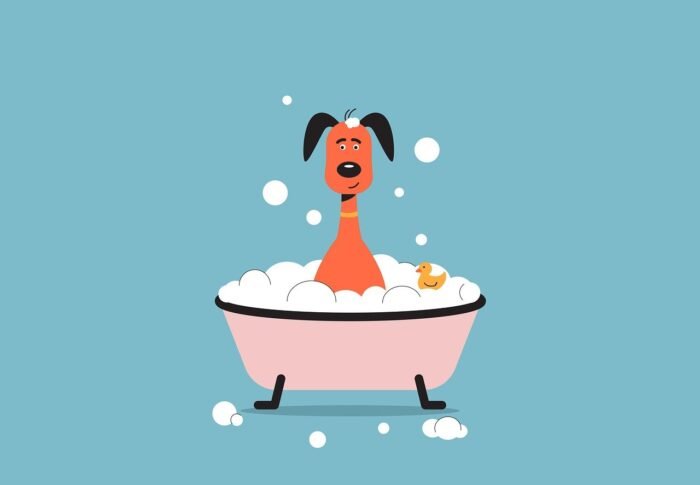
The Ultimate Guide to Crate Training for Dogs
If you’re a dog owner looking to provide a safe and cozy space for your furry friend, then crate training might just be the solution for you. This ultimate guide will walk you through all the ins and outs of crate training, helping you understand its benefits and providing step-by-step instructions on how to get started. Whether you’re looking to house train your new puppy or provide a comfortable den for your adult dog, crate training is a versatile and effective tool that can enhance your pet’s well-being and overall behavior. Get ready to embark on a journey of creating a secure and happy space for your beloved canine companion.

This image is property of images.pexels.com.
Find products like these on Amazon!
Benefits of Crate Training
Provides a safe and secure space
Crate training provides your dog with a safe and secure space of their own. It becomes their den, a place where they can retreat to when they need some alone time or when they feel anxious or overwhelmed. Having a dedicated space like a crate helps them feel secure and reduces their stress levels.
Helps with house training
Crate training is an invaluable tool when it comes to house training your dog. Dogs naturally have a denning instinct, and by confining them in a crate, you tap into this instinct. Dogs are unlikely to soil their sleeping area, so by using the crate to limit their access to the rest of the house, you can teach them to hold their bladder and bowels until you take them outside.
Prevents destructive behavior
One of the biggest benefits of crate training is that it helps prevent destructive behavior. Dogs, especially young puppies, may chew on furniture, shoes, or other household items when left alone. By placing them in a crate while you’re away, you create a safe environment that limits their access to potential chewing targets. This not only protects your belongings but also keeps your dog safe from ingesting anything harmful.
Eases travel and vet visits
Crate training can also make traveling with your dog and visiting the veterinarian much easier. When your dog is crate trained, they are accustomed to being confined in a crate, which makes car rides less stressful for them. Additionally, many vet clinics require dogs to be crated while waiting in the lobby or during certain procedures. Crate training ensures that your dog is comfortable and secure in these situations.
Choosing the Right Crate
Size and space considerations
When choosing a crate for your dog, it’s essential to consider their size and the amount of space they need to feel comfortable. The crate should be large enough for your dog to stand up, turn around, and lie down in a natural position. However, it shouldn’t be too spacious as dogs prefer a cozy den-like environment.
Optimal crate material
Crates are typically made from wire, plastic, or fabric. Each material has its advantages and disadvantages. Wire crates offer excellent airflow and visibility, making them suitable for dogs who prefer an open environment. Plastic crates provide a more den-like feel and can be easier to travel with. Fabric crates are lightweight and portable but may not be suitable for dogs who chew or scratch.
Single-door or double-door crates
Another factor to consider is whether you should choose a single-door or double-door crate. Single-door crates have only one access point, whereas double-door crates have an additional door on the side. Double-door crates provide more flexibility in crate placement and make it easier to access your dog from different angles. Consider your specific needs and space limitations when deciding between the two options.
Find products like these on Amazon!
Setting up the Crate
Selecting a suitable location
Choose a location for the crate that is quiet, comfortable, and easily accessible. Avoid placing the crate in high-traffic areas or near loud appliances, as this can create unnecessary stress for your dog. Ideally, the crate should be placed in a room where your family spends the most time, ensuring your dog feels included while still having a quiet space to retreat to.
Introducing the crate gradually
To help your dog become comfortable with the crate, introduce it gradually. Start by placing the crate in a common area of the house with the door open, allowing your dog to investigate it at their own pace. You can place treats, toys, and bedding inside to make it more enticing. Encourage your dog to enter the crate voluntarily and reward them with praise and treats when they do.
Making the crate comfortable
It’s important to create a cozy and inviting space inside the crate. Place a soft bed or blanket inside for your dog to lie on. Make sure it’s washable in case of accidents. You can also include a few of your dog’s favorite toys or a Kong filled with treats to keep them entertained. The goal is to make the crate an appealing and enjoyable place for your dog to spend time in.
Crate Training Steps
Step 1: Introduce the crate as a positive space
Begin crate training by associating the crate with positive experiences. Feed your dog near or inside the crate, place treats inside for them to find, and provide praise and rewards whenever they voluntarily enter the crate. The goal is to create positive associations with the crate, helping your dog view it as a safe and pleasant place to be.
Step 2: Teach basic crate commands
Once your dog is comfortable entering the crate, it’s time to introduce basic crate commands, such as “kennel” or “crate.” Use a calm and enthusiastic tone of voice and direct your dog towards the crate. When they enter, reward them with praise and treats. Practice this command regularly to reinforce the association between the command and the action.
Step 3: Gradually increase crate time
As your dog becomes more comfortable with the crate, gradually increase the amount of time they spend inside. Start with short intervals and gradually build up to longer periods. Make sure your dog has plenty of mental and physical stimulation before placing them in the crate to help prevent restlessness and boredom.
Step 4: Leave the room while the dog is in the crate
Once your dog is comfortable spending extended periods in the crate, it’s important to start leaving the room while they are inside. This helps them develop independence and confidence in the crate. Start by stepping out briefly and gradually increase the duration. Always return to the room calmly and avoid making a fuss when letting your dog out of the crate.

This image is property of images.pexels.com.
Managing Crate Time
Avoiding excessive crate time
While crate training can be beneficial, it’s essential to avoid leaving your dog crated for excessive periods. Dogs are social animals and need human interaction and mental stimulation. If you need to be away for an extended period, consider utilizing the assistance of a dog walker or doggy daycare to ensure your dog gets the attention they need.
Creating a consistent crate schedule
Establishing a consistent crate schedule is crucial for your dog’s routine and overall well-being. Set regular times for meals, potty breaks, exercise, and crate time. Dogs thrive on routine, and having a predictable schedule can help them feel secure and reduce anxiety.
Providing mental stimulation during crate time
To make crate time more enjoyable for your dog, provide mental stimulation. Give them puzzle toys, stuffed Kongs, or interactive treat dispensers to keep them occupied and mentally engaged. You can also play soft, calming music or leave a TV or radio on low volume to provide some background noise.
Addressing Crate Anxiety
Recognizing signs of anxiety
Some dogs may experience anxiety or fear surrounding crate training. It’s important to recognize the signs of anxiety, which may include excessive whining or barking, pacing, panting, drooling, or attempting to escape. If you notice any of these signs, it’s crucial to address your dog’s anxiety and find ways to make the crate training process more comfortable for them.
Implementing desensitization techniques
Desensitization techniques can be helpful in reducing crate anxiety. Gradually expose your dog to the crate in a positive and relaxed manner. Start by feeding them near the crate, then inside the crate with the door open, and eventually with the door closed for short periods. Progress at your dog’s pace and always provide positive reinforcement and rewards for calm behavior.
Seeking professional help if needed
If your dog’s crate anxiety persists or worsens despite your efforts, it may be beneficial to seek professional help from a certified dog trainer or behaviorist. They can provide guidance, behavior modification techniques, and additional support tailored to your dog’s specific needs.

This image is property of images.pexels.com.
Troubleshooting Crate Training Challenges
Whining or barking in the crate
If your dog whines or barks excessively in the crate, it’s essential to address the underlying cause. It could be due to anxiety, boredom, or a need for attention. Ensure your dog’s physical and mental needs are met before placing them in the crate, and consider using calming supplements or playing soothing music to help relax them.
Resistance to entering the crate
Some dogs may resist entering the crate initially. In this case, make the crate more enticing by placing treats, toys, or even their meals inside. Gradually reduce the lure of the rewards over time. Use positive reinforcement and patience to encourage your dog to enter the crate willingly.
Accidents in the crate
Accidents in the crate can happen, especially with puppies or dogs who are not fully house trained. If accidents occur, it’s important not to scold or punish your dog. This can create negative associations with the crate. Instead, clean up the mess using pet-friendly cleaners and reinforce the house training process by ensuring frequent bathroom breaks outside the crate.
Using Crate Training for Other Purposes
Crate training for safe travel
Crate training can be invaluable when it comes to traveling with your dog. A properly trained dog can travel safely and comfortably in a crate, ensuring they aren’t a distraction to the driver and reducing the risk of injury in case of an accident. Introduce your dog to the travel crate gradually, similar to the initial crate training process, and make sure it’s securely fastened in the vehicle.
Crate training for vet visits
Many veterinarians require dogs to be crated during appointments or procedures. Crate training your dog beforehand makes vet visits less stressful for both of you. Your dog will be accustomed to the crate and may even find comfort in it during the vet visit. Practice crate time with your dog inside the crate while performing fake vet procedures, such as gently handling their paws or examining their ears, to acclimate them to similar sensations.
Crate training for separation anxiety
Crate training can also be beneficial for dogs with separation anxiety. Being in a crate can create a sense of security and prevent destructive behavior caused by anxiety. However, it’s important to address the underlying separation anxiety through behavior modification techniques and, if necessary, seek assistance from a professional trainer or behaviorist.
Alternative Options to Crate Training
Using playpens or exercise pens
If crate training isn’t suitable for your dog or you prefer alternative options, playpens or exercise pens can provide a safe and secure space. These enclosures allow more freedom of movement while still confining your dog to a specific area. Make sure the playpen or exercise pen is appropriately sized for your dog and includes toys, bedding, and water.
Implementing positive reinforcement training methods
Positive reinforcement training methods can be used as an alternative to crate training. By rewarding desired behaviors and redirecting unwanted behaviors, you can establish boundaries and encourage obedience without the need for confinement. However, it’s important to note that some dogs may still benefit from crate training, even if positive reinforcement methods are used.
Maintenance and Safety Tips
Keeping the crate clean and odor-free
Regularly clean your dog’s crate to maintain hygiene and eliminate odors. Remove bedding and wash it as needed, using pet-friendly detergents. Wipe down the crate with a mild disinfectant, making sure to rinse it thoroughly and dry it before placing your dog back inside. This helps create a pleasant environment for your dog and prevents the buildup of bacteria.
Choosing safe crate accessories
When selecting accessories for your dog’s crate, prioritize safety. Avoid using any items that could be a choking hazard or easily destroyed and ingested. Opt for durable, non-toxic toys and bedding materials. Monitor your dog’s interaction with crate accessories and replace them if they become damaged or worn out.
Ensuring proper ventilation
Proper ventilation is crucial in maintaining a comfortable and safe environment inside the crate. Ensure that your dog’s crate allows for adequate airflow to prevent overheating or poor air quality. Wire crates and crates with mesh walls typically offer better ventilation compared to solid crates. Position the crate in a well-ventilated area of your home, avoiding direct exposure to drafts or heat sources.
Find products like these on Amazon!







-
-
1 day
Tagged Crate training, Nighttime Routine, positive reinforcement, Puppy training